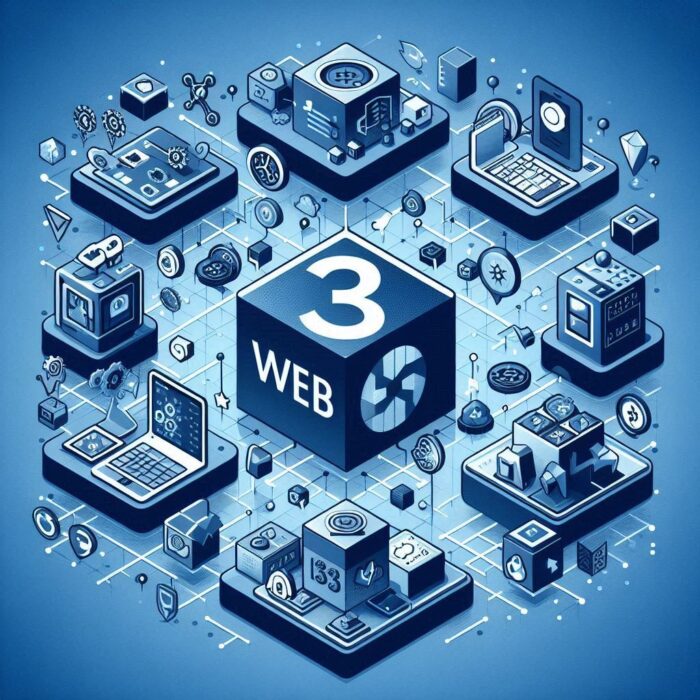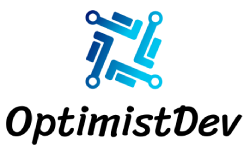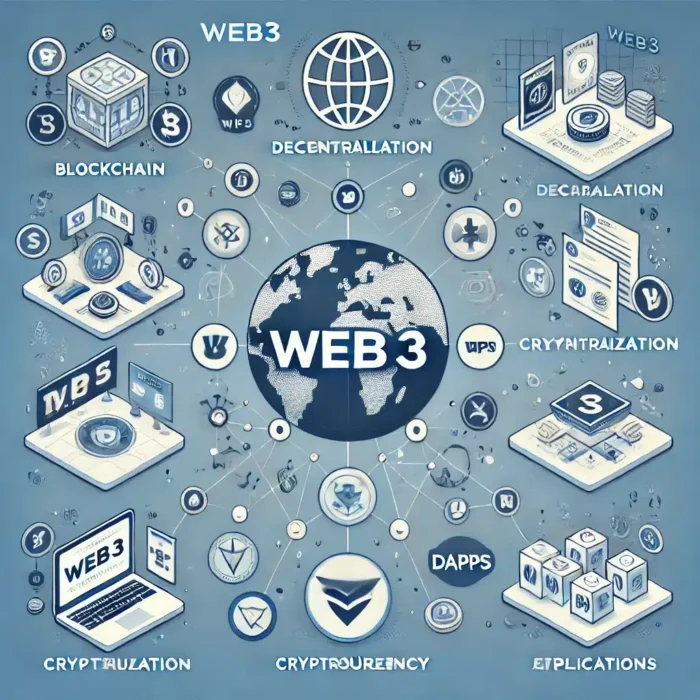From Web2 to Web3: How the Internet is Evolving
Introduction
The internet has evolved significantly since its inception. Today, we live in a Web2 world, characterized by centralized platforms, social networks, and a vast array of user-generated content. However, the next phase of the internet—Web3—is on the horizon. Web3 promises to transform the way we interact online by focusing on decentralization, giving users more control and ownership over their data. But how does Web3 differ from Web2, and what makes it so revolutionary? Let’s dive into the details.
Join the conversation! Subscribe to OptimistDev Herald for our take. Click Here
Briefly Define Web2 and Its Key Characteristics
Web2 is the version of the internet we interact with today. It brought about interactive websites, social media platforms, and the ability for users to generate their own content. Some of its key characteristics include:
- Centralized control by large corporations (e.g., Facebook, Google).
- User-generated content hosted on centralized platforms.
- Users exchange personal data for free access to platforms.
Introducing Web3 and Its Core Principles
Web3, often dubbed the “decentralized internet,” aims to address the limitations of Web2. It’s built on blockchain technology, ensuring greater transparency, security, and user control. The core principles of Web3 include:
- Decentralization: Removing centralized intermediaries and giving power back to users.
- Ownership: Users own and control their data, assets, and identities.
- Transparency: Every action is recorded on a transparent and immutable ledger (blockchain).
Highlighting the Key Differences Between Web2 and Web3
- Web2: Centralized control, platforms own the data.
- Web3: Decentralized control, users own their data.

The Evolution from Web2 to Web3
Centralization vs. Decentralization
In Web2, centralization is a key feature. Large corporations control platforms, servers, and user data, acting as gatekeepers for most online interactions. For instance, platforms like Facebook and Google manage enormous amounts of data on centralized servers, leaving users dependent on these companies for access and services.
Web3, in contrast, promotes decentralization. Blockchain technology, the backbone of Web3, allows data to be distributed across many nodes, eliminating the need for a single controlling entity. This ensures that no single corporation or organization holds complete control over data, offering more freedom and security to users.
Ownership and Control
In Web2, while users can create content and interact online, they have little control over their data. Platforms collect and monetize user data, often without full transparency. This lack of control is a major issue in Web2.
Web3 addresses this by empowering users to have full ownership over their data. Thanks to blockchain, users can store and manage their own data, deciding how and where it’s used. This shift from platform control to user control is one of the core pillars of Web3.
Intermediaries
Web2 relies heavily on intermediaries—social media platforms, cloud service providers, and corporations that facilitate interactions. For example, if you want to buy a product, a company acts as the intermediary between you and the seller.
Web3 aims to eliminate the need for intermediaries through smart contracts and decentralized networks. Transactions and interactions can occur directly between users without needing a middleman, reducing fees, increasing transparency, and minimizing censorship.
Key Components of Web3
Blockchain
At the heart of Web3 is blockchain technology. A blockchain is a decentralized, digital ledger that records transactions across multiple computers. This ensures that data is transparent, secure, and immutable (cannot be altered or deleted). Each transaction is verified by the network, ensuring trust without the need for a central authority.
Cryptocurrency
Cryptocurrency is the digital currency of Web3. Unlike traditional currency, which is regulated by governments or banks, cryptocurrencies are decentralized and operate on blockchain networks. They serve various roles, such as facilitating transactions, incentivizing users, and powering decentralized applications. Popular examples include Bitcoin and Ethereum, each with unique use cases ranging from digital payments to smart contracts.
Decentralized Applications (DApps)
DApps (Decentralized Applications) are apps built on blockchain that differ from traditional apps in that they operate on decentralized networks rather than centralized servers. This means no single entity controls the app, and it’s accessible to anyone with an internet connection. The benefits of DApps include greater privacy, censorship resistance, and transparency. For example, platforms like Uniswap allow users to trade cryptocurrencies without needing a central exchange.
Potential Use Cases of Web3
Finance
Web3 is already transforming the financial industry through Decentralized Finance (DeFi). DeFi platforms use blockchain to offer financial services like lending, borrowing, and trading without traditional banks or intermediaries. Popular DeFi applications include Aave (a lending platform) and Uniswap (a decentralized exchange), which allow users to transact directly without middlemen.
Gaming
Web3 has the potential to revolutionize gaming by introducing concepts like play-to-earn and non-fungible tokens (NFTs). In Web3 games, players can earn digital assets or tokens that they truly own, unlike traditional games where in-game purchases are controlled by developers. Examples include games like Axie Infinity, where players can earn cryptocurrency by playing.
Social Media
Decentralized social media platforms aim to give users control over their own data, unlike Web2 platforms where user data is often monetized by corporations. These platforms also aim to resist censorship, allowing for more freedom of expression. Examples like Mastodon and Lens Protocol are early pioneers in the decentralized social media space.
Challenges and Opportunities
Scalability
One of the biggest challenges facing Web3 is scalability. Current blockchain technology can struggle with handling large numbers of transactions, resulting in slower processing times and higher fees. However, solutions like layer 2 scaling and new consensus mechanisms are being developed to address these issues.
User Experience
For many users, Web3 can be difficult to understand and navigate, especially compared to the familiar Web2 platforms. The complexity of managing digital wallets, private keys, and blockchain technology can be intimidating to new users. Improving user experience is a major focus for Web3 developers.
Regulatory Landscape
The regulatory environment for Web3 is still evolving. Governments worldwide are grappling with how to regulate cryptocurrencies, DeFi platforms, and blockchain-based applications, which creates uncertainty for users and developers.
Adoption
Widespread adoption of Web3 is still in its early stages. While there is significant excitement about its potential, it will take time for Web3 technologies to become mainstream. Education and ease of use will be key factors in driving adoption.
Conclusion
Web3 represents a significant evolution of the internet, offering decentralization, user ownership, and more transparent interactions. While it’s still in its early stages, Web3 has the potential to transform industries like finance, gaming, and social media. As the technology matures and challenges are addressed, Web3 could be the next major step in the internet’s evolution, empowering users in ways previously unimaginable.
Seeking a Website Developer for your business. We’re here to seamlessly transition your business into the digital world with tailored expertise. Elevate your online presence with us




snapchat video downloader without watermark hd
10 October 2024Great article! I really appreciate the clear and detailed insights you’ve provided on this topic. It’s always refreshing to read content that breaks things down so well, making it easy for readers to grasp even complex ideas. I also found the practical tips you’ve shared to be very helpful. Looking forward to more informative posts like this! Keep up the good work!